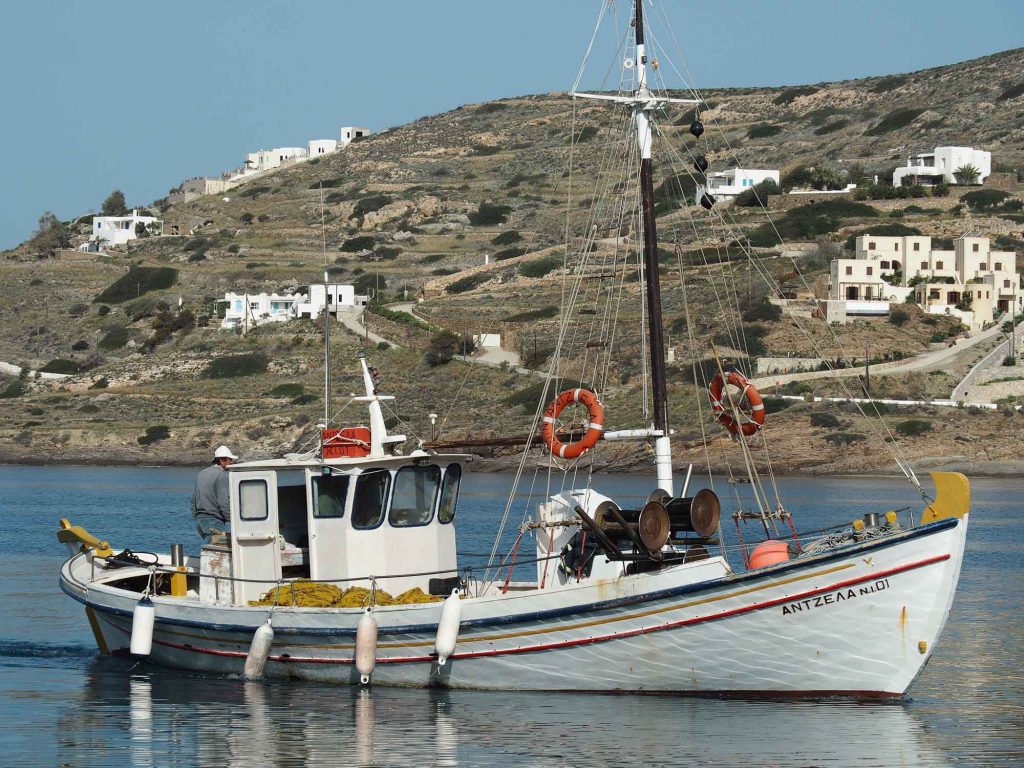Crete, the largest of the Greek islands, is a paradise for fishing enthusiasts. With its extensive coastline, clear waters, and rich marine life, the island offers a variety of fishing opportunities, from traditional techniques to modern angling. Whether you’re a seasoned fisherman or a beginner looking to cast your first line, this guide will introduce you to the best fishing spots and techniques in Crete.
1. Best Fishing Spots in Crete
Elounda Bay: Located on the northeastern coast, Elounda Bay is famous for its calm waters and abundant marine life. The bay is sheltered, making it ideal for fishing throughout the year. Common catches include bream, mullet, and various species of bass. The area also offers opportunities for boat rentals and guided fishing tours.
Agios Nikolaos: This picturesque town on the eastern coast is known for its beautiful Voulismeni Lake and surrounding waters. The lake connects to the sea, providing a unique fishing environment. Anglers can expect to catch species like sea bream, snapper, and occasionally octopus. The local fish market is also a great place to learn about the best catches of the day.
Chania Harbor: Chania, on the northwest coast, boasts a historic harbor teeming with fish. Early morning and late evening are the best times to fish here, when the waters are less busy. The harbor is known for species like mackerel, sardines, and grouper. Nearby, the old town provides a charming backdrop for a day of fishing.
Plakias Beach: On the southern coast, Plakias Beach offers excellent shore fishing opportunities. The clear, deep waters are home to a variety of fish, including wrasse, bream, and the occasional barracuda. This spot is also popular for spearfishing, thanks to the excellent underwater visibility.
Balos Lagoon: Situated in the northwest, Balos Lagoon is not only a stunningly beautiful spot but also a great place for fishing. Accessible by boat or a challenging hike, this remote area offers a serene fishing experience. Anglers can catch a variety of fish, including bass and mackerel, while enjoying the breathtaking scenery.
2. Fishing Techniques in Crete
Traditional Handlining: Handlining is a simple and traditional method still widely used in Crete. It involves using a handheld line with baited hooks. This technique is particularly effective in the rocky areas and shallow waters around the island. Bait such as small fish, shrimp, or squid works well for attracting bream, mullet, and other common species.
Rod and Reel Fishing: For those who prefer more modern techniques, rod and reel fishing is popular along the coasts and from boats. Light to medium tackle is suitable for most species found in Cretan waters. Using lures or live bait can increase your chances of a good catch. Fishing from piers, beaches, or boats can yield a variety of fish, including bass, mackerel, and grouper.
Spearfishing: Spearfishing is a favored method in the clear waters of Crete, offering an exciting and immersive experience. This technique requires diving equipment and a speargun. Spearfishers typically target species like bass, grouper, and octopus. It’s important to be aware of local regulations and protected areas to ensure sustainable fishing practices.
Trolling: Trolling is a technique that involves dragging a baited line or lure behind a moving boat. This method is effective for catching larger fish such as tuna, swordfish, and barracuda. Boats equipped with multiple rods and specialized gear can increase your success rate. The waters around Crete are ideal for trolling, especially in the deeper areas off the coast.
Fly Fishing: Although less common, fly fishing can be practiced in the coastal lagoons and estuaries of Crete. This method uses lightweight lures called flies to mimic small fish or insects. It requires skill and practice but can be very rewarding. Species like mullet and bass are common targets for fly fishermen.
3. Fishing Regulations and Conservation
It’s essential to be aware of local fishing regulations to promote sustainable practices and protect marine life. In Crete, certain areas are designated as marine protected zones where fishing is restricted or prohibited. These regulations help preserve fish populations and the health of the marine ecosystem.
Licensing: Recreational fishing generally does not require a license in Greece, but it’s advisable to check with local authorities or fishing clubs for specific regulations and seasonal restrictions.
Size and Bag Limits: Respect size and bag limits for various species to avoid overfishing. Returning undersized fish to the water helps ensure sustainable fish populations.
Protected Species: Be mindful of protected species and avoid targeting them. Species such as the Mediterranean monk seal and certain types of sharks are protected under Greek law.
4. Fishing Gear and Supplies
Local Shops: Crete has numerous fishing shops where you can purchase gear, bait, and tackle. These shops often provide valuable local knowledge about the best fishing spots and techniques.
Rentals: If you don’t have your own equipment, many coastal towns offer fishing gear rentals. Some also provide boat rentals and guided tours, making it easy to explore different fishing locations.
Conclusion
Fishing in Crete is a rewarding experience that combines the thrill of the catch with the island’s stunning natural beauty. Whether you prefer traditional methods or modern techniques, Crete offers diverse opportunities for anglers of all skill levels. By following local regulations and practicing sustainable fishing, you can enjoy the island’s rich marine life while contributing to its preservation. So grab your gear, head to one of Crete’s many fishing spots, and immerse yourself in the timeless tradition of fishing on this beautiful island.


